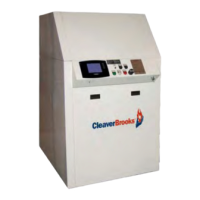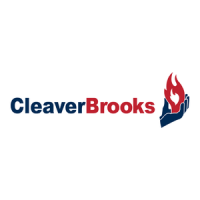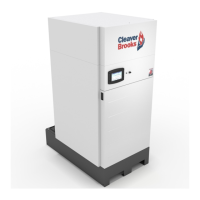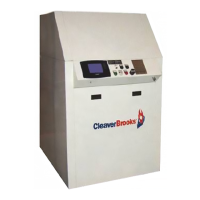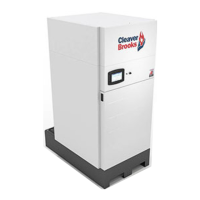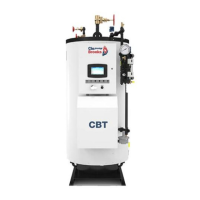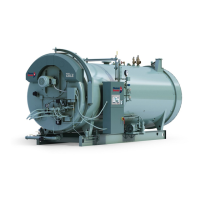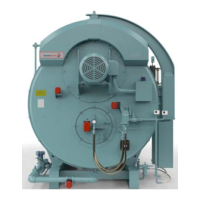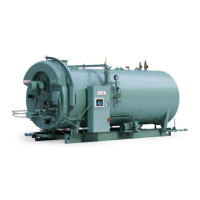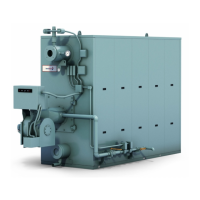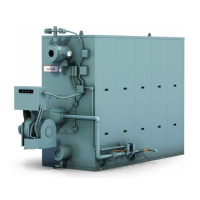29 750-265
Rate Limits and Override
The Limit and Override subsystem consists of three separate
concepts:
• Safety limit functions that cause a burner control to lockout
or recycle if safety-critical limits are reached.
• Rate limit functions that limit the range of modulation due
to special or abnormal operating conditions. It is common
for a rate limit to become effective whenever conditions
approach a safety limit, to try to prevent the consequence
of reaching the safety limit.
• Rate override functions set the firing rate to a specific value
without regard to firing rate due to modulation requests or
rate limits.
Rate Limit Priorities
There are two kinds of rate limit:
— Rate reducers, those that act to limit the maximum fir-
ing rate:
• Delta-T limit
• Stack limit
• Slow start
•Outlet limit
• Forced rate (Forced rate might actually specify any
rate, but for priority purposes it is considered to be
a reducer.)
— Rate increasers, that act to increase the firing rate.
There is only one of these:
• Anticondensation
Anticondensation has a programmable priority vs. the other
rate limits:
Anticondensation priority: priority bits
The priority bits indicates the TRUE or FALSE status for each
of the following:
Anticondensation > Delta-T
Anticondensation > Stack limit
Anticondensation > Slow start
Anticondensation > Forced Rate
Anticondensation > Outlet limit
So the rate limit priority scheme uses the following steps,
where “active” means that the rate override is both enabled
and requesting its rate:
1. If Anticondensation is active and all rate reducers are
inactive, then Anticondensation determines the rate.
2. If Anticondensation is active and one or more rate
reducers are also active, then the priority of Anticonden-
sation is compared to each active rate reducer. Of those
active rate reducers that have higher priority than Anti-
condensation, the lowest rate requested by any of these
determines the rate. However, if Anticondensation has
higher priority than any active rate reducers, then Anti-
condensation determines the rate.
3. If Anticondensation is inactive, then the lowest rate
requested by any active rate reducer determines the fir-
ing rate.
When an “abnormal” rate limit occurs an alert is issued. The
rate limits that are abnormal are: Delta-T, Stack, Outlet, and
Anticondensation. (The other two limits, Slow Start and
Forced Rate, are considered to be normal in that they always
occur if they are enabled.
Delta-T Limit (Rate Limit Only)
The Delta-T limit function is not a safety function. It is
designed to reduce the firing rate in case the difference
between the Inlet and the Outlet temperatures is excessive.
Table 12. Limits and Rate Override: Delta-T Limit Parameters.
Parameter Comment
Delta-T enable Enable, Disable
This parameter enables or disables the entire delta-T limit function.
Delta-T degrees Degrees or None
If the outlet temperature exceeds the inlet temperature and this difference exceeds the
temperature given by this parameter, then the response defined below will occur.
As the temperature approaches this limit, the Stepped Modulation Limiting function (see
“Stepped modulation rate limit” on page 30) is active.
Delta-T response Lockout, Recycle & Delay
If the temperature difference exceeds the limit, then a response will occur.
If the selected response is a lockout, then the burner control locks out. However, if the
selected response is Recycle & Delay, the burner control recycles with an alert and holds
while waiting for a delay (see below) to expire, and after the delay it tries again (assuming
that demand is still present).
Delta-T delay MM:SS
This parameter provides the delay time for the Delta-T limit.
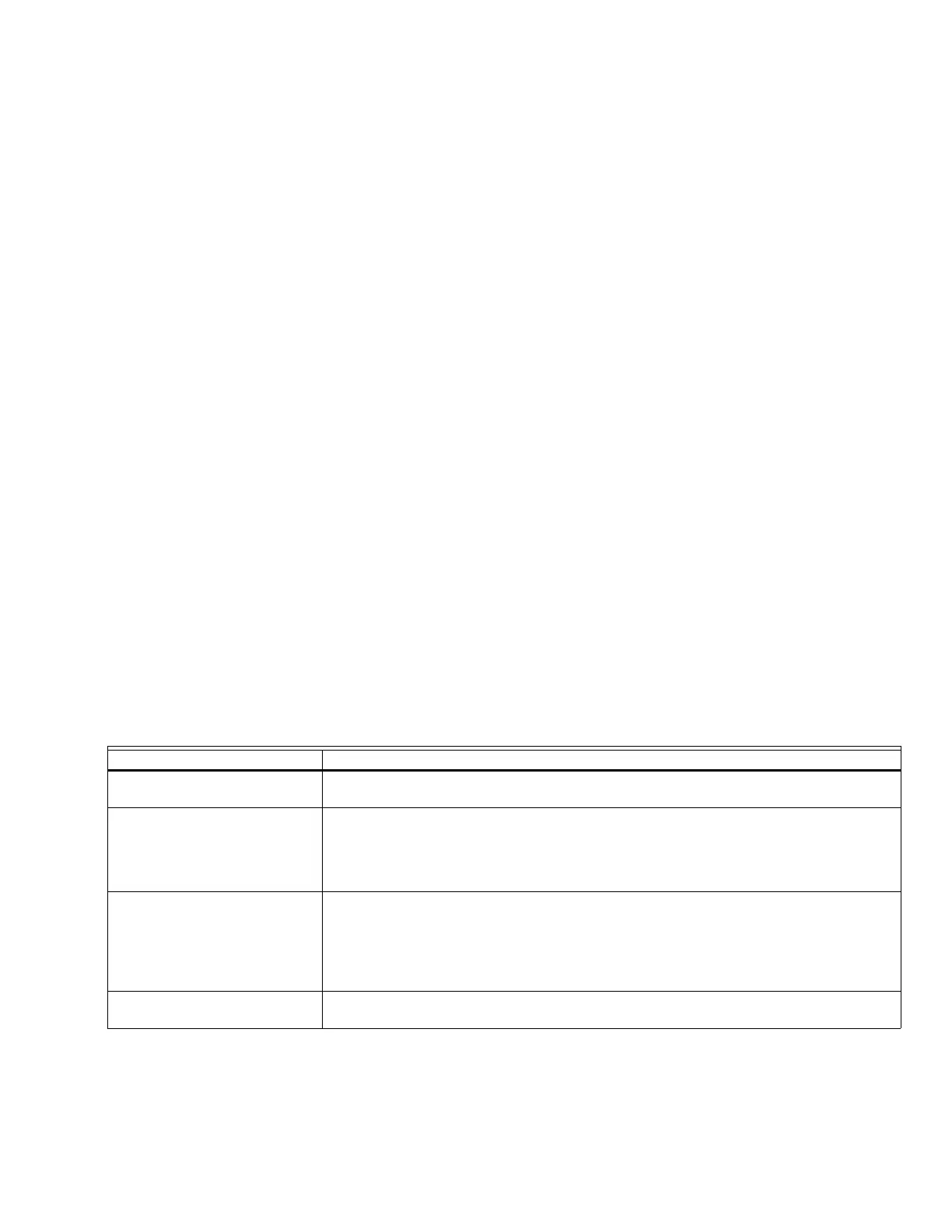